


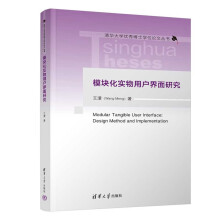
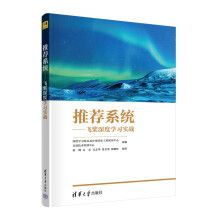
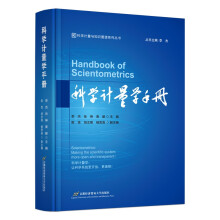
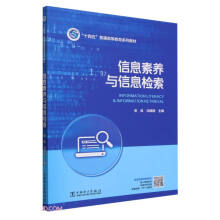


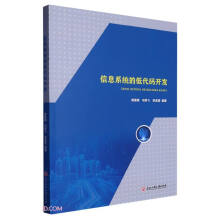
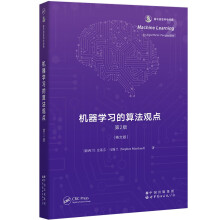
目 录
学者篇(scholars)
1. 阿尔弗雷德· 詹姆斯· 洛特卡(Alfred James Lotka) …………………………………… 3
2. 艾伦· 林赛· 马凯(Alan Lindsay Mackay) ……………………………………………… 6
3. 艾伦· 普里查德(Alan Pritchard) ………………………………………………………… 9
4. 安德拉斯· 舒伯特(András Schubert) ………………………………………………… 11
5. 安东尼· 范瑞安(Anthony van Raan) …………………………………………………… 13
6. 奥利· 佩尔松(Olle Persson) …………………………………………………………… 15
7. 贝尔韦尔德· 格里菲斯(Belver Griffith) ……………………………………………… 17
8. 贝特拉姆· 克劳德· 布鲁克斯(Bertram Claude Brookes) …………………………… 19
9. 本· 马丁(Ben Martin) …………………………………………………………………… 21
10. 彼得· 温克勒(Péter Vinkler) ………………………………………………………… 23
11. 彼得· 英格森(Peter Ingwersen) ……………………………………………………… 25
12. 布莱斯· 克罗宁(Blaise Cronin) ……………………………………………………… 27
13. 德瑞克· 约翰· 德索拉· 普赖斯(Derek John de Solla Price) ………………………… 29
14. 蒂博尔· 布劳恩(Tibor Braun) ………………………………………………………… 31
15. 弗朗西斯· 纳林(Francis Narin) ……………………………………………………… 33
16. 亨克· 莫德(Henk Moed) ……………………………………………………………… 35
17. 亨瑞· 斯莫尔(Henry Small) …………………………………………………………… 38
18. 霍华德· 怀特(Howard White) ………………………………………………………… 40
19. 简· 弗拉奇(Jan Vlachý) ……………………………………………………………… 42
20. 蒋国华(Jiang Guohua) ………………………………………………………………… 44
21. 金碧辉(Jin Bihui) ……………………………………………………………………… 46
22. 凯瑟琳· 麦凯恩(Katherine McCain) ………………………………………………… 48
23. 凯文· 博亚克(Kevin Boyack) ………………………………………………………… 50
24. 理查德· 克拉凡斯(Richard Klavans) ………………………………………………… 52
25. 利欧· 埃格赫(Leo Egghe) …………………………………………………………… 54
26. 梁立明(Liang Liming) ………………………………………………………………… 56
27. 刘则渊(Liu Zeyuan) …………………………………………………………………… 58
科学计量学手册
Handbook of Scientometrics
2
28. 卢茨· 博曼(Lutz Bornmann) ………………………………………………………… 60
29. 卢多· 瓦特曼(Ludo Waltman) ………………………………………………………… 62
30. 路特· 莱兹多夫(Loet Leydesdorff) …………………………………………………… 64
31. 罗伯特· 金· 默顿(Robert King Merton) ……………………………………………… 66
32. 罗纳德· 鲁索(Ronald Rousseau) ……………………………………………………… 68
33. 迈克· 塞沃尔(Mike Thelwall) ………………………………………………………… 70
34. 迈克尔· 莫拉夫奇克(Michael Moravcsik) …………………………………………… 72
35. 米歇尔· 齐特(Michel Zitt) …………………………………………………………… 74
36. 乔治· 金斯利· 齐普夫(George Kingsley Zipf) ……………………………………… 76
37. 邱均平(Qiu Junping) …………………………………………………………………… 79
38. 萨缪尔· 克莱门特· 布拉德福(Samuel Clement Bradford) ………………………… 81
39. 托马斯· 塞缪尔· 库恩(Thomas Samuel Kuhn) ……………………………………… 83
40. 瓦西里· 瓦西列维奇· 纳利莫夫(Vasiliy Vasilevich Nalimov) ……………………… 85
41. 沃尔夫冈· 格兰泽(Wolfgang Glänzel) ……………………………………………… 88
42. 武夷山(Wu Yishan) …………………………………………………………………… 90
43. 叶鹰(Fred Y. Ye) ……………………………………………………………………… 92
44. 尤金· 加菲尔德(Eugene Garfield) …………………………………………………… 94
45. 约翰· 戴斯蒙德· 贝尔纳(John Desmond Bernal) …………………………………… 97
46. 约翰· 欧文(John Irvine) ……………………………………………………………… 99
47. 赵红州(Zhao Hongzhou) ……………………………………………………………… 101
48. 朱迪特· 巴伊兰(Judit Bar-Ilan) ……………………………………………………… 103
术语篇(terminologies)
1. BERT模型(bidirectional encoder representations from transformers model) ………… 107
2. CPM算法(clique percolation method) ………………………………………………… 110
3. DIKW模型(data-information-knowledge-wisdom model) ……………………………… 113
4. ESI高影响力论文(ESI top papers) ……………………………………………………… 115
5. e指数(e-index) …………………………………………………………………………… 116
6. g指数(g-index) ………………………………………………………………………… 118
7. HITS算法(hyperlink induced topic search algorithm) ………………………………… 120
8. h指数(h-index) ………………………………………………………………………… 122
9. PageRank算法(PageRank algorithm) …………………………………………………… 125
目录
3
10. PI指数(productivity index) …………………………………………………………… 127
11. p指数(p-index) ………………………………………………………………………… 129
12. R指数(R-index) ………………………………………………………………………… 131
13. Scimago期刊排名(Scimago journal rank) …………………………………………… 133
14. VOS算法(visualization of similarities algorithm)……………………………………… 135
15. w指数(w-index) ………………………………………………………………………… 137
16. Y指数(Y-index) ………………………………………………………………………… 138
17. z指数(z-index) ………………………………………………………………………… 140
18. π 指数( π -index) ……………………………………………………………………… 142
19. 埃尔德什数(Erdős number) …………………………………………………………… 143
20. 标准化影响系数(source normalized impact per paper) ……………………………… 145
21. 波普尔“三个世界”理论(Popper’s three world) …………………………………… 148
22. 布拉德福定律(Bradford’s law) ……………………………………………………… 150
23. 参考文献出版年谱(reference publication year spectroscopy) ………………………… 152
24. 词频分析(word frequency analysis) …………………………………………………… 154
25. 词频-逆文档频率(term frequency and inverse document frequency) ………………… 157
26. 大数据(big data) ……………………………………………………………………… 159
27. 颠覆性技术(disruptive technology) …………………………………………………… 161
28. 颠覆性指数(disruption index) ………………………………………………………… 163
29. 点互信息(point mutual information) ………………………………………………… 165
30. 多层网络分析(multi-layer network analysis) ………………………………………… 167
31. 多维尺度分析(multidimensional scaling) …………………………………………… 169
32. 多样性测度指标(diversity measurement index) ……………………………………… 171
33. 多源文献数据融合(multi-source literature data fusion) ……………………………… 174
34. 二分图(bipartite graph) ………………………………………………………………… 176
35. 分数计数(fractional counting) ………………………………………………………… 178
36. 复杂网络(complex networks) ………………………………………………………… 182
37. 概率主题模型(probabilistic topic model) ……………………………………………… 184
38. 共词分析(co-word analysis) …………………………………………………………… 186
39. 共现分析(co-occurrence analysis) …………………………………………………… 188
40. 共引分析(co-citation analysis) ………………………………………………………… 190
41. 关联分析(association analysis) ………………………………………………………… 192
42. 关联数据(linked data) ………………………………………………………………… 194
科学计量学手册
Handbook of Scientometrics
4
43. 核心期刊(core journals) ……………………………………………………………… 197
44.“ 黑天鹅”文献与“白天鹅”文献(black and white swans publications) …………… 199
45. 互信息(mutual information) …………………………………………………………… 201
46.“ 灰犀牛”技术(grey-rhino technologies) …………………………………………… 203
47. 回归分析(regression analysis) ………………………………………………………… 206
48. 活跃度指数(activity index) …………………………………………………………… 208
49. 火花型文献(sparking foundational publications) ……………………………………… 210
50. 机器学习(machine learning) …………………………………………………………… 212
51. 基尼系数(Gini coefficient) …………………………………………………………… 214
52. 计量语言学(quantitative linguistics) ………………………………………………… 216
53. 计算社会学(computational sociology) ………………………………………………… 219
54. 技术会聚(technology convergence) …………………………………………………… 221
55. 技术挖掘(technology mining) ………………………………………………………… 223
56. 加菲尔德文献集中定律(Garfield’s law of concentration) …………………………… 225
57.《 旧金山宣言》(The San Francisco Declaration) ……………………………………… 227
58. 巨型期刊(mega journal) ……………………………………………………………… 230
59. 距离测度(distance measures) ………………………………………………………… 232
60. 聚类分析(cluster analysis) …………………………………………………………… 236
61. 卷积神经网络(convolutional neural networks) ……………………………………… 238
62. 开放存取(open access) ………………………………………………………………… 241
63. 开放科学(open science) ……………………………………………………………… 243
64. 开放数据(open data) …………………………………………………………………… 244
65. 开放同行评议(open peer review) ……………………………………………………… 246
66. 开放引文(open citation) ……………………………………………………………… 248
67. 科技政策学(science of science policy) ………………………………………………… 249
68. 科学编史学(historiography of science) ……………………………………………… 251
69. 科学传播(science communication) …………………………………………………… 253
70. 科学叠加图(science overlay maps) …………………………………………………… 255
71. 科学发现的采掘模型(excavating models of scientific discovery) …………………… 258
72. 科学发展节律指标(indicator of the rhythm of science) ……………………………… 261
73. 科学范式(scientific paradigm) ………………………………………………………… 263
74. 科学合作(scientific collaboration) …………………………………………………… 265
75. 科学基金(science funding) …………………………………………………………… 268
目录
5
76. 科学计量学(scientometrics) …………………………………………………………… 270
77. 科学-技术关联(science-technology linkage) ………………………………………… 272
78. 科学家声望(scientist reputation) ……………………………………………………… 274
79. 科学交流(scientific communication) ………………………………………………… 276
80. 科学经济学(economics of science) …………………………………………………… 278
81. 科学社会学(sociology of science) …………………………………………………… 280
82. 科学史(history of science) …………………………………………………………… 282
83. 科学学(science of science) …………………………………………………………… 284
84. 科学研究的智力常数(intelligence constant of scientific work) ……………………… 287
85. 科学哲学(philosophy of science) ……………………………………………………… 289
86. 科学知识图谱(map of science) ………………………………………………………… 291
87. 科研评价(research evaluation) ………………………………………………………… 294
88. 空间科学计量学(spatial scientometrics) ……………………………………………… 297
89. 跨学科、多学科与超学科(interdisciplinary,multidisciplinary and
transdisciplinary) ………………………………………………………………………… 299
90. 莱顿网络聚类算法(Leiden network cluster algorithm) ……………………………… 302
91.《 莱顿宣言》(The Leiden Manifesto) …………………………………………………… 305
92. 链路分析(link analysis) ……………………………………………………………… 308
93. 链路预测(link prediction) ……………………………………………………………… 310
94. 领域加权引用影响力(field-weighted citation impact) ………………………………… 312
95. 鲁汶网络聚类算法(Louvain network cluster algorithm) ……………………………… 314
96. 掠夺性期刊(predatory journals) ……………………………………………………… 316
97. 轮廓系数(silhouette coefficient) ……………………………………………………… 318
98. 论文致谢(acknowledgement) ………………………………………………………… 320
99. 逻辑斯蒂曲线(logistic curve) ………………………………………………………… 322
100. 洛特卡定律(Lotka’s law) …………………………………………………………… 324
101. 马太效应(Matthew effect) …………………………………………………………… 326
102. 幂律分布(power-law distribution) …………………………………………………… 328
103. 帕累托分布(Pareto distribution) ……………………………………………………… 330
104. 普赖斯指数(Price index) …………………………………………………………… 332
105. 期刊超越指数(field normalized citation success index) ……………………………… 334
106. 期刊分区(journal division) …………………………………………………………… 336
107. 期刊即时指数(immediacy index) …………………………………………………… 338
温馨提示:请使用浙江工贸职业技术学院的读者帐号和密码进行登录